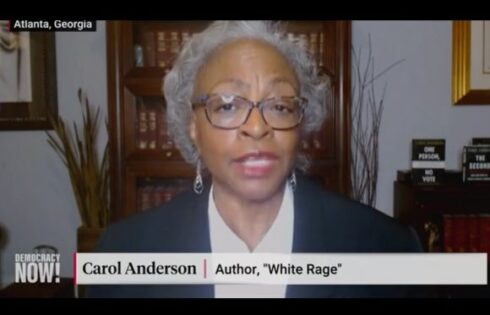
The University of Southern California’s Annenberg Inclusion Initiative Research Lab has been busy dissecting the demographics of the film critic industry, and the results are shocking — SHOCKING, I tell you — especially if you’re a progressive and/or in academia.
The Lab’s “Critic’s Choice?” study looked at reviews from the site Rotten Tomatoes of the top-grossing films of 2017 “tallying the gender, race and ethnicity of critics.” And (ready?) an “overwhelming” percentage — 77.8 percent — were written by men. The percentage of white people writing reviews was even higher: eighty-two.
Worse still, critics who are male and white put out 64 percent of total reviews.
“The very individuals who are attuned to the under and misrepresentation of females on screen and behind the camera are often left out of the conversation and critiques,” said report author Stacy Smith, USC professor of communication and founder of the Annenberg Inclusion Initiative.
The Daily Trojan reports the study also “discovered” that the “most valuable” movie reviews were those written by white men. Lead author of the study Marc Choueiti said these reviews “were more pronounced than females and minorities.”
To alleviate this sin, Choueiti said a re-examination of how “top critic” is defined would be a start, “or simply casting a wider net can be the opportunity to open up and diversity the voices heard in the critic space.”
To mitigate the crisis, the researchers of the study proposed a set of target inclusion goals for film reviews. The 30/30/20/20 is one of the suggested methods that the researchers endorsed.
According to the research report, 30/30/20/20 is a ratio that the pool of movie critics should align with to gain a more comprehensive and well-represented evaluation on new movie releases.
“Current population statistics in the U.S. show a gender and race breakdown as being roughly 30 percent white males, 30 percent white females, 20 percent underrepresented males and 20 percent underrepresented females,” Choueiti said. “In the report we call upon aggregator sites professional organizations, educational institutions, and entertainment industry leaders to take practical steps toward inclusion of underrepresented groups in this field.” …
“Notably, [actress] Brie Larson called for more underrepresented reviewers to be included as press for popular films and revealed at the Sundance Film Festival and TIFF are dedicating press credentials to underrepresented critics,” Choueiti said.
Does anyone still care what an “official” movie critic says about a film these days? Do critics’ takes on movies really make you want (or not want) to go see them … let alone a critic pool that’s “more diverse”?
MORE: How classic films would be reviewed by modern ‘studies’ profs and SJWs
MORE: Prof: ‘The Shape of Water’ an allegory of the Trump presidency
IMAGE: carbon arc/Flickr





Please join the conversation about our stories on Facebook, Twitter, Instagram, Reddit, MeWe, Rumble, Gab, Minds and Gettr.